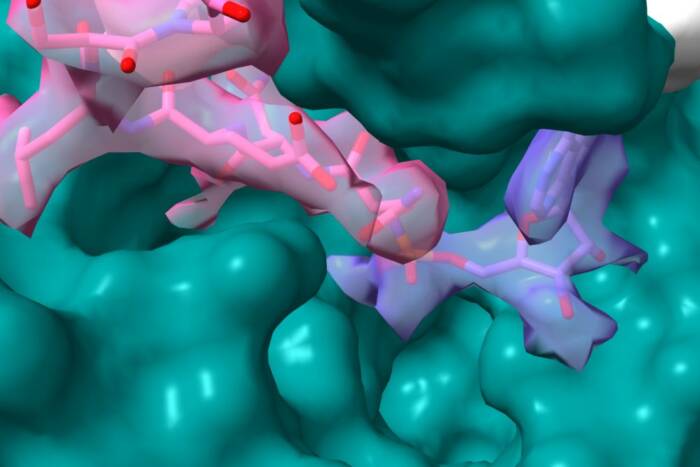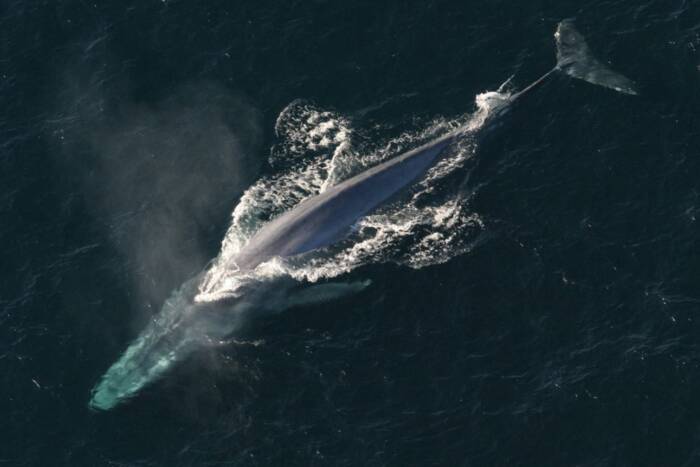Lasker Award Honors Rockefeller University's James Darnell
“Special Achievement in Medical Science” recognizes a groundbreaking researcher, influential writer and mentor
James E. Darnell Jr., M.D., the pioneering researcher in the field of gene regulation — who has nurtured the careers of over 100 young, talented scientists — was honored today with the 2002 Albert Lasker Award for Special Achievement in Medical Science.
An elected member of the National Academy of Sciences, Darnell joined Rockefeller University in 1974 and is the university’s Vincent Astor Professor and head of the Laboratory of Molecular Cell Biology.
“For more than 40 years, Jim Darnell has had a major impact on American science,” says Nobel laureate Phillip A. Sharp, Ph.D., in his letter nominating the Rockefeller scientist for the Lasker honor. “He has played a unique role as a scientist, author and educator over this time and is uniquely qualified to receive this award.”
Darnell’s many scientific achievements include the discovery of a pathway by which “molecular cues” on the surface of a cell signal the genes in that cell’s nucleus to take specific actions. These signals are sent in reaction to changes in the cell’s external environment in the body. As a result of the signals, the genes may express RNA for a specific hormone or other protein, or halt gene expression or activation. Such communications contribute to the survival of cells and indeed the entire organism.
The cell-signaling route discovered by Darnell — called the JAK-STAT pathway — “provides the clearest example of signaling from the cell surface to genes in the nucleus. Studies of this pathway also yield important new insights into the biology of specific human cancers including multiple myeloma and head and neck tumors,” adds Sharp, Institute Professor and founding director of the McGovern Institute for Brain Research at the Massachusetts Institute of Technology.
Besides advancing scientific understanding of the factors regulating activation or expression of genes in animal cells as models for human biology, Darnell has fostered the development of over 100 scientists, most of whom today are now professors or directors of major laboratories at institutions throughout the world.
“In addition, at Rockefeller University, Jim Darnell has been a guiding force in helping to build a strong, stellar faculty,” says Thomas P. Sakmar, M.D., acting president of the university. “Starting in the mid-1980s, working with then-President and Nobel laureate Josh Lederberg, Jim helped to establish more than 15 new junior faculty positions, each a head of a major laboratory at the university.”
“Four of the first five outside offers turned us down because they did not believe they could be independent at Rockefeller,” Darnell recalls.
Ten of the first 12 recruits in the program became full professors at Rockefeller, and more than 20 such young scientists have become tenured Rockefeller University professors through this effort. Eighteen of Rockefeller’s over 70 laboratories are now headed by scientists who are either assistant or associate professors.
Recruiting young, talented scientists as heads of labs “is widely hailed as having greatly broadened the research fabric of the university,” adds Sharp. Darnell has remained chairman of the Non-tenured Junior Faculty Heads of Laboratory throughout this time.
Darnell was the “originating author and wrote approximately half of Molecular Cell Biology,” says Sharp about the textbook, the first edition of which was published in 1986 with co-authors Harvey F. Lodish, Ph.D., and David Baltimore, Ph.D. “It is fair to say that this book, together with Molecular Biology of the Cell [by Bruce Alberts, Ph.D., James D. Watson, Ph.D., and others], provided teachers of biology throughout the world with material to teach a thoroughly modern course based, for the first time, on modern experimental biology, just as was traditionally the case with chemistry and physics.”
However, it is Darnell’s scientific innovation and leadership that form the core of his achievements.
“It is no exaggeration to say that Jim is one of three or four most notable contributors to the molecular understanding of animal cell physiology,” Sharp notes.
Darnell’s research has been basic to understanding how normal cells grow and become specialized. That is, how instructions in genes get copied into messenger RNA (mRNA) and expressed at the right time and at the proper rate.
Darnell’s research supplied much of the evidence for the now generally accepted scientific concept that all RNA is formed by extensive “molecular carpentry.” His studies first with ribosomal and transfer RNA, molecules that assist in coding mRNA to make protein, showed that both these molecules are chemically “processed” — chemical groups are added after synthesis and a long initial product is cut into usable pieces — before their use in the cell’s cytoplasm.
His studies on pre-mRNA from the DNA virus, adenovirus, paved the way for the Nobel Prize-winning discovery of RNA splicing in mRNA formation by Sharp, Richard Roberts and their colleagues.
Perhaps the most far reaching results from Darnell’s laboratory began with research in the early 1980s that culminated in 1992 with the mapping of the first complete “signal transduction” pathway: the JAK-STAT signaling pathway. Darnell’s group discovered that a set of dual function proteins, which they named STATs — for Signal Transducers and Activators of Transcription — remain quiescent in the cell until circulating polypeptides bind to specific receptors on the surface of the cell.
Specific STATs then are activated, pair up and travel to the nucleus to activate appropriate genes. For example, some STATs switch on a group of interferon-responsive genes when interferon contacts cells. Interferon, a cytokine used in anti-cancer and anti-viral therapy to halt or slow proliferation of cancer cells or viruses, is sometimes used in combination with chemotherapy. This discovery has promoted a flurry of research into the ways cells receive signals to become and remain specialized, to respond to growth factors and to deal with infection.
Darnell’s lab also has shown that the persistent activation of a protein called Stat3 can, by itself, cause normal cells to behave like cancer cells. Scientists previously knew that Stat3 was often activated in various human cancer types, including lymphomas, leukemias, breast cancer and a high percentage of head and neck cancers, but Darnell and his colleagues showed for the first time that persistent Stat3 activation could contribute directly to the development of tumors.
During the last 20 years, Darnell also has studied the coordinated control of sets of genes that are expressed mainly in liver cells. By studying the proteins responsible for liver-specific gene activation, he discovered a group of proteins that was also found to switch on specific genes very early in animal embryonic development.
Currently, Darnell and his colleagues at Rockefeller are exploring the molecular mechanisms by which STATs activate genes and why persistently active Stat3 contributes to cancer.
Founded by John D. Rockefeller in 1901, The Rockefeller University was this nation’s first biomedical research university. Today it is internationally renowned for research and graduate education in the biomedical sciences, chemistry, bioinformatics and physics. A total of 21 scientists associated with the university have received the Nobel Prize in medicine and physiology or chemistry, 17 Rockefeller scientists have received Lasker Awards, five have been named MacArthur Fellows and 11 have garnered the National Medal of Science. More than a third of the current faculty are elected members of the National Academy of Sciences.


